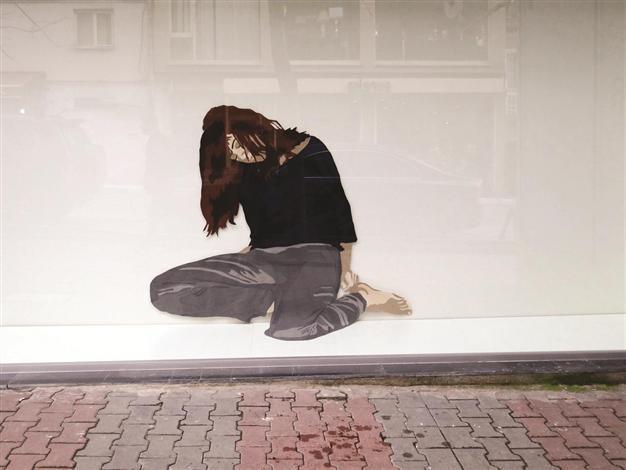Young artist questioning nature of human existence
ISTANBUL - Hürriyet Daily News

Ümmühan Yörük’s two-piece exhibition at Pi Artworks Tophane is an invitation to explore the transitory nature of our existence through the death of “others.” The exhibition titled “Nearness at a Distance” is the artist’s first solo exhibition in
Istanbul and opened March 1 to run through April 14.
The main display item of the exhibition consists of polyester-cut human models lying on the floor, wearing no shoes and with eyes closed. The work’s immediate impression is that it depicts a scene of mass-killing, but in time the figures seem to be dead bodies collected from different spots and dragged together. The work stimulates a series of questions, first being “Who is the murderer?” Because the way the bodies were brought together is reminiscent of a crime scene so carefully built by a prodigious serial killer as a means of boost or menace, it immediately brings to mind the human agency behind.
That is the effect the artist is probably after. In her indirect way Yörük demands the audience to question the human element behind any killing. She invites us to investigate the simulacrum of a crime scene, knowing very well what kind of questions will pop into our minds, and equally sure of the fact that we are not receiving any answers because there is no crime, nor are there dead bodies to investigate after, and what we have before our eyes is fiction.
“Nearness at a Distance,” as is very well explained through its title, is an attempt to bring closer what is most alien to human experience, while at the same time it distances the audience systematically from the reality of what they have before their eyes.
Contrast of lively colors and dead facesAnother question the scene invites the viewer to ask is how these people died. They show no blood stains, no wounds, no torn clothes – all look as if they have peacefully shifted to death from a restful night’s sleep. This is to stimulate the viewer to question his or her initial supposition as to the figures’ life condition. What made the viewer so sure of their death, when they might as well be peacefully sleeping people?
The lively colors of the outfits are well-juxtaposed with the state of deadly sleep reflected on the faces of the models, which furthers our doubt as to the state they are really in: Are they as alive as the viewer him/herself? Or are the clothes there to remind the audience that these people who seem to have passed away now were once as alive as their beholders? And what does this say about the nature of our existence as onlookers? The answer to that question is best hinted at a secondary work displayed at the gallery’s front window showing another similar figure falling slowly to the ground, her back up against a wall.
The fact the figures have no shoes brings to mind that if this is a scene of killing it is probably due to domestic violence. Yörük confirms this probability by saying in an interview with the Hürriyet Daily News that her family members were her models. “I photographed them first and then prepared the cut-out figures to reflect those photograph images.”
The dead wear no shoes. Let it be a random street killing, or a traffic accident or domestic violence, the photographs of crime scenes always testify lack of shoes, either lost during the killing or while the bodies were being retrieved for removal. Similarly, Yörük’s simulacrum shows bare-footed figures, perhaps because it is the end of their walk or they have no more places to go.
contemporary,
 Ümmühan Yörük’s two-piece exhibition at Pi Artworks Tophane is an invitation to explore the transitory nature of our existence through the death of “others.” The exhibition titled “Nearness at a Distance” is the artist’s first solo exhibition in Istanbul and opened March 1 to run through April 14.
Ümmühan Yörük’s two-piece exhibition at Pi Artworks Tophane is an invitation to explore the transitory nature of our existence through the death of “others.” The exhibition titled “Nearness at a Distance” is the artist’s first solo exhibition in Istanbul and opened March 1 to run through April 14.